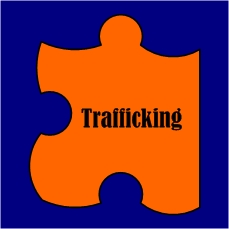UNODC Global Report on Trafficking of Persons Released

Find the 102-page pdf here. On page 16, it mentions “illegal adoption” as one of trafficking reasons(excerpted below):
“Trafficking for the removal of organs, for example, comprised 0.2 per cent of the total number of detectedcases in 2010. While this constitutes only a fraction of all cases, the geographical spread of those detected cases is significant: cases of trafficking for purposes of organ removal were reported by 16 countries in all regions considered in this report. Trafficking for purposes not specifically mentioned in the Trafficking in Persons Protocol, including begging, forced marriages, illegal adoption, participation in armed combat and the commission of crime (usually petty crime/street crime), accounted for 6 per cent of the total number of detected cases in 2010, including the 1.5 per cent of victims who were exploited for begging.”
UN says human trafficking found in 118 countries [Yahoo News 2/13/13 by Edit M Lederer/Associated Press] says “One worrying trend is the apparent increase in the trafficking of children, with the percentage of detected victims increasing from 20 percent between 2003-2006 to some 27 percent between 2007-2010, the report said.
Among the child victims detected, it said, two of every three trafficked children were girls.”
Lack of Convictions
The Associated Press article also says “The report said progress has been made in fighting trafficking, with 134 countries and territories passing laws making it a crime.
But the UNODC said progress in getting convictions is limited.
Of the 132 countries covered in the report, it said 16 percent did not record a single conviction for human trafficking between 2007 and 2010.”
Other Excerpts from the report
- Page 19 “While many cases of trafficking in persons start as an attempt to improve the conditions of life, sometimes circumstances transform those attempts into incidences of exploitation and abuse. Deeply rooted social values and practices help create vulnerabilities that make victims of trafficking in persons (men, women and children) easy targets for criminals intent on profiting from those individuals’ hopes of a better life. Recruiting and exploiting a vulnerable person is relatively easy and often carries a low risk of detection.”
- Page 39 “The Trafficking in Persons Protocol indicated that the above-mentioned forms of exploitation should be considered, at a minimum, in national human trafficking legislation. By introducing the term “at a minimum” in the definition of the purposes of trafficking, Member States left open the option of including other or more specific purposes for which human trafficking was committed. In recent years, national legislation and jurisdictions have expanded the application of trafficking legislation. This has resulted in the inclusion of phenomena that existed long before the Protocol, such as child begging or the use of children to commit petty crimes, illegal adoptions 17 and forced marriages, among other things. Some countries reported cases of trafficking for the trading of body parts for rituals and/or traditional healing and medicine.
For the purpose of this report, these forms are grouped together under the term “other forms of trafficking”.
-
Footnote 17 on Page 39 “The interpretative notes on article 3 of the Trafficking in Persons Protocol (see A/55/383/Add.1, paras. 63-68) indicate that illegal adoption is to be considered as a purpose of trafficking where this amounts to a practice similar to slavery as defined in the Supplementary Convention on the Abolition of Slavery, the Slave Trade and Institutions and Practices Similar to Slavery (cited in Travaux Préparatoires of the Negotiations for the Elaboration of the United Nations Convention against Transnational Organized Crime and the Protocols Thereto, p. 347).
-
Page 41 “Cases of trafficking for the purpose of illegal adoption have been detected in 15 countries.”
-
Page 42 shows a map that indicates baby selling and illegal adoption (and US is one of them). They only mention 6 by name in the rest of the report and some obvious places are missing. Harvesting of children for adoption is considered legal in many places.
-
Page 61 “Azerbaijan and Bulgaria reported cases of the sale of babies, and Portugal reported cases of trafficking for illegal adoption.”
-
Page 68 “Trafficking for illegal adoptions was reported by the authorities of El Salvador, while the United Nations Stabilization Mission in Haiti (MINUSTAH) reported cases of cross-border illegal adoption in Haiti in 2009.”
-
Page 75 “In detail, 30 per cent of the victims assisted by the Mongolian Gender Equality Centre between 2003 and 2009 were trafficked for forced labour, and 45 per cent for sexual exploitation. The other victims assisted were exploited through other forms of exploitation or for illegal adoption.”
REFORM Puzzle Piece


Recent Comments